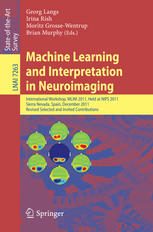

Most ebook files are in PDF format, so you can easily read them using various software such as Foxit Reader or directly on the Google Chrome browser.
Some ebook files are released by publishers in other formats such as .awz, .mobi, .epub, .fb2, etc. You may need to install specific software to read these formats on mobile/PC, such as Calibre.
Please read the tutorial at this link: https://ebookbell.com/faq
We offer FREE conversion to the popular formats you request; however, this may take some time. Therefore, right after payment, please email us, and we will try to provide the service as quickly as possible.
For some exceptional file formats or broken links (if any), please refrain from opening any disputes. Instead, email us first, and we will try to assist within a maximum of 6 hours.
EbookBell Team

4.1
80 reviewsBrain imaging brings together the technology, methodology, research questions and approaches of a wide range of scientific fields including physics, statistics, computer science, neuroscience, biology, and engineering. Thus, methodological and technological advances that enable us to obtain measurements, examine relationships across observations, and link these data to neuroscientific hypotheses happen in a highly interdisciplinary environment. The dynamic field of machine learning with its modern approach to data mining provides many relevant approaches for neuroscience and enables the exploration of open questions. This state-of-the-art survey offers a collection of papers from the Workshop on Machine Learning and Interpretation in Neuroimaging, MLINI 2011, held at the 25th Annual Conference on Neural Information Processing, NIPS 2011, in the Sierra Nevada, Spain, in December 2011. Additionally, invited speakers agreed to contribute reviews on various aspects of the field, adding breadth and perspective to the volume. The 32 revised papers were carefully selected from 48 submissions. At the interface between machine learning and neuroimaging the papers aim at shedding some light on the state of the art in this interdisciplinary field. They are organized in topical sections on coding and decoding, neuroscience, dynamcis, connectivity, and probabilistic models and machine learning.